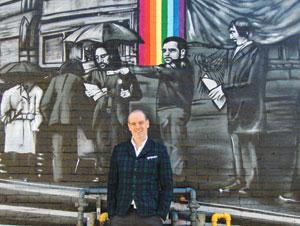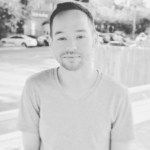The Village committee has dwindled to four members since its inception in 2006. In response to these shrinking numbers, committee head Ian Capstick will extend a velvet gloved hand to the community, Nov 14 at The Buzz Restaurant.
Capstick, along with committee members Hershel Kagan, Stroked Ego’s Kevin Martin and Wilde’s Doug Saunders, invites interested community members to sip martinis and take in a presentation on the future of the city’s 12 gay blocks along Bank Street.
Attracting members to any gay board or civil group is always a challenge, Capstick says, and one-on-one recruitment wasn’t proving effective.
The committee is seeking fresh ideas from talented Ottawans, and a variety of positions remain open. Capstick says any skilled community member is welcome.
“If somebody has a skill set or something they think they can offer, we like to joke, ‘Just make a position title for yourself,’” he says. “There’s no vote; we do everything by consensus. That’s been the ethos of the Village since Glenn [Crawford] started it.”
Crawford resigned from the committee in January after six years as its head. He says it was time to step down and let someone else take the reins, although he will continue to be involved at a volunteer level.
Cementing the Village was an uphill battle, Crawford says, and the length of time it took Village projects to become a reality was the biggest challenge the committee faced.
“At times, it was frustrating; there were road blocks we experienced along the way,” he says.
The Village street signs are an example of Crawford’s efforts. He says they are an indicator to any visitors strolling in Centretown that they are in gay territory.
Some community members, however, see the Village as a divisive entity.
Former PTS board member George McBeth grew up in central Saskatchewan and first experienced gay life in Saskatoon before heading to the Davie Street Village in Vancouver. McBeth says that back then young gays and lesbians needed a safe space to be themselves, but he thinks times have changed.
“While it existed, to be sure, and it served a wonderful purpose for many years, the reasons it existed are no longer as valid or relevant in today’s world,” he says.
When the Village signs went up on Bank Street, McBeth says, it reminded him of a different era. “I am not offended by the signs in the least, and if someone wants to believe those few streets represent a gay village, good on you,” he says. “It’s not my reality, nor my need today.”
Capstick disagrees. “I’ve worked a long time to make sure there’s a cultural designation that respects what could be up to 10 percent of our population,” he says. “We . . . [built] a community where there are more and more folks that have our values and our culture.”
As the Village enters what Crawford calls stage two, he says it’s up to the current committee to promote growth and revitalize the area.
“When you look down the street and compare it to where we were five years ago, we’re much more ‘out,’” Crawford says.


 Why you can trust Xtra
Why you can trust Xtra


